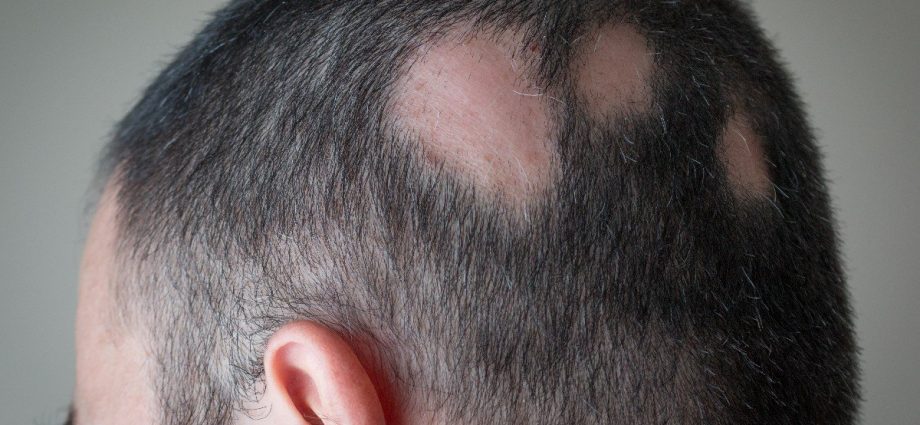MONDAY, June 10, 2024 (HealthDay News) — Researchers have developed a novel way to promote hair growth in people who have the autoimmune disease alopecia areata.
It’s a skin patch that delivers immune-system controllers through an array of tiny needles.
In alopecia, the body’s own T-cells mistakenly attack hair follicles. The experimental treatment strategy uses a patch to deliver specialized cells called T-cell regulators, or Tregs for short, directly to balding spots. The aim is to thwart the unwanted immune system attack and halt hair loss.
Current immunosuppressants used to treat alopecia target both T-cells as well as the Tregs.
“Our patches enable local delivery of biologics, which, instead of suppressing the immune system, promote regulatory T-cells in the skin,” explained co-corresponding author Natalie Artzi, a researcher at Brigham and Women’s Hospital in Boston. “This restores immune balance and resolves the T-cell attack on hair follicles, offering a potential long-term solution without compromising the immune system’s ability to defend against infections and malignancies.”
In autoimmune conditions like alopecia, Tregs fall short in protecting hair follicles. Current treatments, which suppress the immune system response, fail to address the underlying issue and increase the odds that hair loss will return once treatment stops. They also put patients at risk for infection and malignancies.
In the new approach, a microneedle patch is used to deliver drugs through the skin without stimulating pain receptors located deeper within it.
“While topical therapy often fails to penetrate the skin’s outer layer, our patches improve the local delivery of biologics to the deeper layers of diseased skin and reprogram the immune system to generate tolerance at the site of antigen encounter,” co-corresponding author Dr. Jamil Azzi, an immunologist at Brigham and Women’s, said in a hospital news release.
The microneedle patch is still being refined and tested and is not yet ready for clinical use. Researchers, who reported on the patch recently in the journal Advance Materials, are looking at ways it might be deployed to treat other autoimmune skin diseases, such as vitiligo and psoriasis.
“This targeted approach holds great potential for improving treatment outcomes and reducing the burden of autoimmune and immune-mediated diseases on patients’ lives,” Artzi said.
More information
The Mayo Clinic has more about alopecia.
SOURCE: Brigham and Women’s Hospital, news release, June 6, 2024
Copyright © 2025 HealthDay. All rights reserved.

